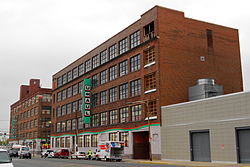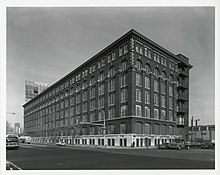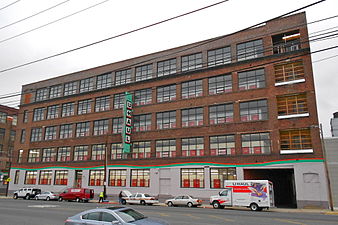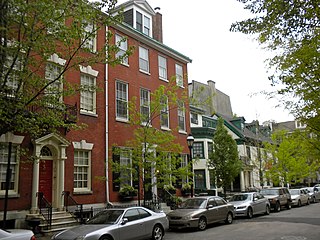
Washington Square West is a neighborhood in Center City, Philadelphia, Pennsylvania, United States. The neighborhood roughly corresponds to the area between 7th and Broad Streets and between Chestnut and South Streets, bordering on the Independence Mall tourist area directly northeast, Market East to the north, Old City and Society Hill to the East, Bella Vista directly south, Hawthorne to the southwest, and mid-town Philadelphia and Rittenhouse Square to the west. The area takes its name from Washington Square, a historic urban park in the northeastern corner of the neighborhood. In addition to being a desirable residential community, it is considered a hip, trendy neighborhood that offers a diverse array of shops, restaurants, and coffee houses. Washington Square West contains many gay-friendly establishments, especially in the gay village area of the neighborhood commonly known as the Gayborhood, which hosts annual events celebrating LGBT culture in Philadelphia, including OutFest.
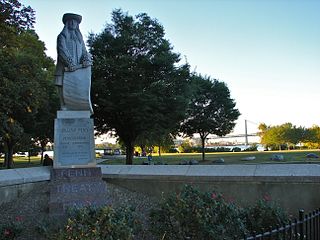
Fishtown is a neighborhood in the River Wards section of Philadelphia, Pennsylvania, United States. Located northeast of Center City Philadelphia, its borders are somewhat disputed today due to many factors, but are roughly defined by the triangle created by the Delaware River, Front Street, and York Street. Some newer residents expand the area to Lehigh Avenue to the northeast, while some older residents shrink the area to Norris Street. It is served by the Market–Frankford Line rapid transit subway/elevated line of the SEPTA system. Fishtown is a largely working class Irish Catholic neighborhood, but has recently seen a large influx of young urban professionals and gentrification.
Woodward & Lothrop was a department store chain headquartered in Washington, D.C. that began as the capital's first department store in 1887. Woodies, as it was often nicknamed, maintained stores in the Mid-Atlantic United States. Its flagship store was a fixture of Washington, D.C.'s downtown shopping district, competing with Garfinckel's and acquiring Palais Royal. The chain filed for bankruptcy in January 1994 and completed liquidation in November 1995, with most locations sold to either J. C. Penney or May Department Stores Company. The flagship building is a D.C. historic landmark that became the center of controversy over competing visions for DC's urban renewal after the chain's demise, and the former service warehouse in the city's northeast is also listed as a landmark.

Center City includes the central business district and central neighborhoods of Philadelphia, Pennsylvania, United States. It comprises the area that made up the City of Philadelphia prior to the Act of Consolidation, 1854, which extended the city borders to be coterminous with Philadelphia County.

North Philadelphia, nicknamed North Philly, is a section of Philadelphia, Pennsylvania. It is immediately north of Center City. Though the full extent of the region is somewhat vague, "North Philadelphia" is regarded as everything north of either Vine Street or Spring Garden Street, between Northwest Philadelphia and Northeast Philadelphia. It is bordered to the north by Cheltenham Township along Cheltenham Avenue, Spring Garden Street to the south, 35th Street to the west and Adams Avenue to the east. The Philadelphia Police Department patrols five districts located within North Philadelphia: the 22nd, 25th, 26th, 35th and 39th districts. There are fifteen ZIP codes for North Philadelphia: 19120, 19121, 19122, 19123, 19125, 19126, 19130, 19132, 19133, 19134, 19137, 19138, 19140, 19141, and 19150.
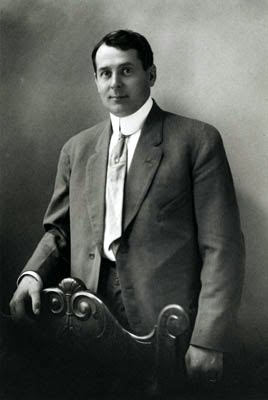
Harry Wardman was a real estate developer in Washington, D.C. during the early 20th century whose developments included landmark hotels, luxury apartment buildings, and many rowhouses. When he died in 1938, one-tenth of the residents of Washington were said to live in a Wardman-built home.

The Washington Avenue Historic District is located in Downtown West, St. Louis, Missouri along Washington Avenue, and bounded by Delmar Boulevard to the north, Locust Street to the south, 8th Street on the east, and 18th Street on the west. The buildings date from the late 19th century to the early 1920s. They exhibit a variety of popular architectural styles of those years, but most are revival styles or in the commercial style that would later come to be known as the Chicago School of architecture. Most are large multi-story buildings of brick and stone construction, built as warehouses for the St. Louis garment district. Many have terra cotta accents on their facades. After World War II, the decline in domestic garment production and the preference for single-story industrial space led to many of the buildings being vacant or underused due to functional obsolescence.

The Ybor Factory Building is a historic site in Tampa, Florida, United States located at 1911 North 13th Street. The main factory and its surrounding support buildings cover an entire city block between 8th Avenue and 9th Avenues and 13th and 14th Streets in the Ybor City Historic District section of the Ybor City neighborhood. C. E. Parcell is credited as the building's architect.

One South Broad, also known as the Lincoln-Liberty Building or PNB Building, is a 28-story 472-foot (144 m) office tower in Center City, Philadelphia, Pennsylvania, United States. The art deco tower, designed by architect John Torrey Windrim as an annex for Wanamaker's department store, was completed in 1932. Wanamaker's Men's Store opened in the first seven floors of the building, which is located a block from Wanamaker's main store, and was intended to rival European department stores with its size and selection. In 1952, the Philadelphia National Bank (PNB) bought the building and converted it into offices and banking space. Until 2014, the building's bell tower was decorated on all four sides with PNB's initials in stainless steel 16 feet (4.9 m) tall. Wells Fargo is the main tenant, occupying almost half the building. The former banking space at street level was converted to retail and restaurant space in 2000.

The New Amsterdam Historic District is a historic district located in Detroit, Michigan. Buildings in this district are on or near three sequential east-west streets on the two blocks between Woodward Avenue and Second Avenue. It was listed on the National Register of Historic Places in 2001.

The Park Avenue Historic District is a historic district located in Detroit, Michigan, along Park Avenue between Adams St. and I-75. The district includes the Women's City Club, the Detroit Building, and the Park Avenue House. The district was designated a Michigan State Historic Site in 1996 and listed on the National Register of Historic Places in 1997.

The Lower Woodward Avenue Historic District, also known as Merchant's Row, is a mixed-use retail, commercial, and residential district in downtown Detroit, Michigan, located between Campus Martius Park and Grand Circus Park Historic District at 1201 through 1449 Woodward Avenue and 1400 through 1456 Woodward Avenue. The district was listed on the National Register of Historic Places in 1999.

Downtown Sarasota Historic District is a 19 acres (7.7 ha) historic district in Sarasota, Florida. It is bound by 1st Street, Orange Avenue, State Street, Gulf Stream Avenue and North Pineapple Avenue. On April 9, 2009, it was added to the U.S. National Register of Historic Places.
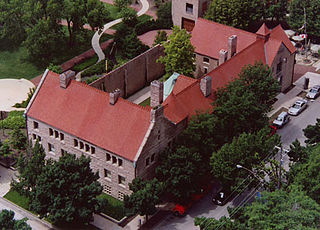
Prairie Avenue is a north–south street on the South Side of Chicago, which historically extended from 16th Street in the Near South Side to the city's southern limits and beyond. The street has a rich history from its origins as a major trail for horseback riders and carriages. During the last three decades of the 19th century, a six-block section of the street served as the residence of many of Chicago's elite families and an additional four-block section was also known for grand homes. The upper six-block section includes part of the historic Prairie Avenue District, which was declared a Chicago Landmark and added to the National Register of Historic Places.

The Crescent Warehouse Historic District is a 10.5-acre (4.2 ha) historic district in Downtown Davenport, Iowa, United States. The district is a collection of multi-story brick structures that formerly housed warehouses and factories. Most of the buildings have been converted into loft apartments. The district was listed on the National Register of Historic Places in 2003.

John Torrey Windrim was an American architect. His long time chief designer was W. R. Morton Keast.

Gay Street is a street in Knoxville, Tennessee, United States, that traverses the heart of the city's downtown area. Since its development in the 1790s, Gay Street has served as the city's principal financial and commercial thoroughfare, and has played a primary role in the city's historical and cultural development. The street contains Knoxville's largest office buildings and oldest commercial structures. Several buildings on Gay Street have been listed on the National Register of Historic Places.
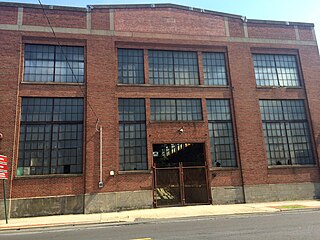
John A. Roebling's Sons Company, Trenton N.J., Block 3 is the northern portion of the former Roebling manufacturing complex in Trenton, New Jersey. The buildings date from 1908–1929 and the site was added to the National Register of Historic Places on August 22, 2012.
The William Steele & Sons Company was an architectural firm that was located in Philadelphia, Pennsylvania.
